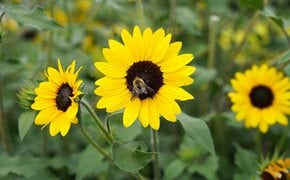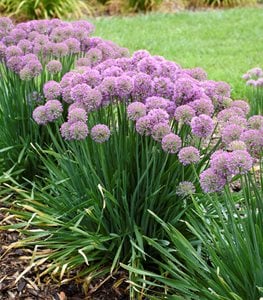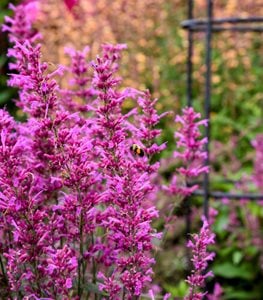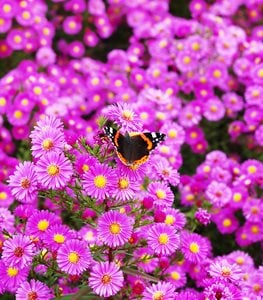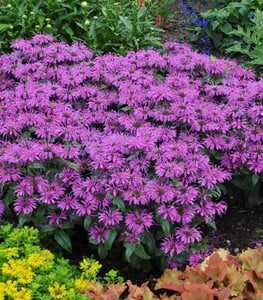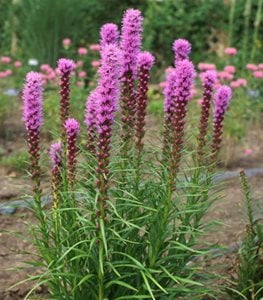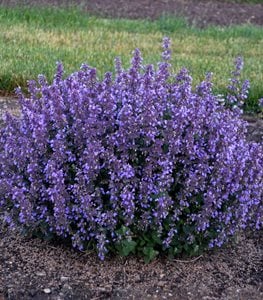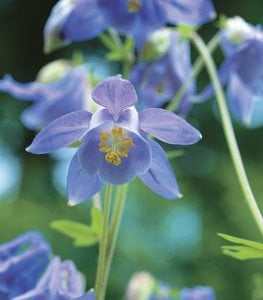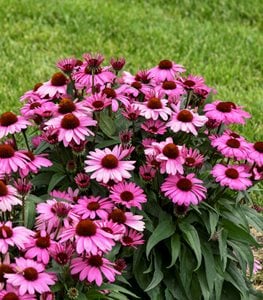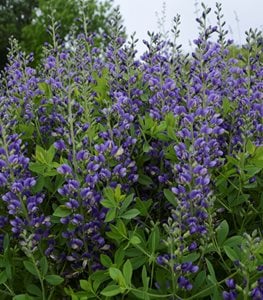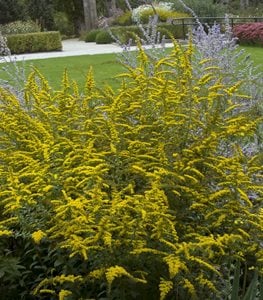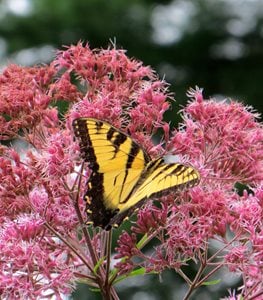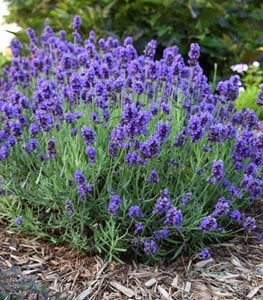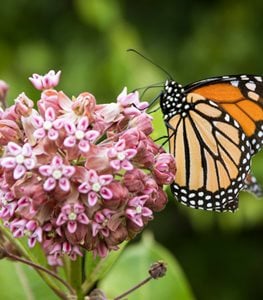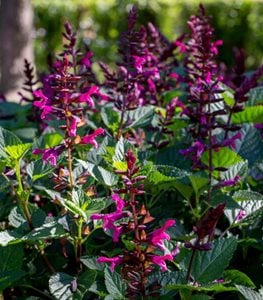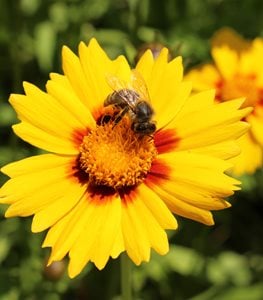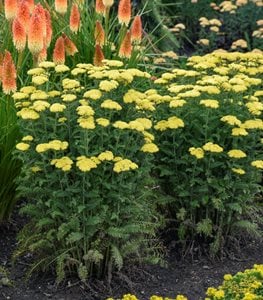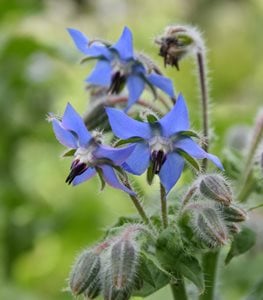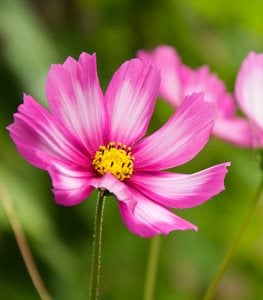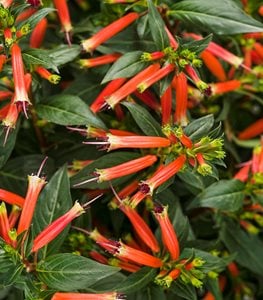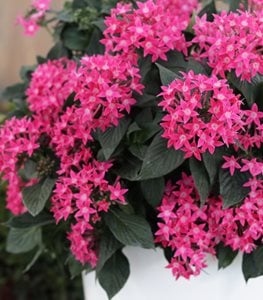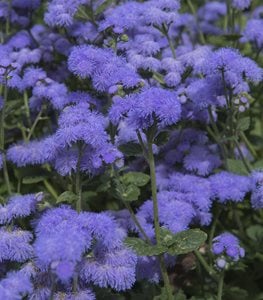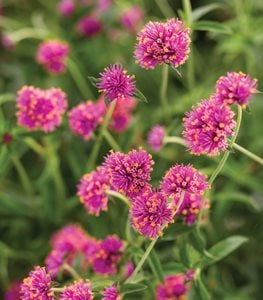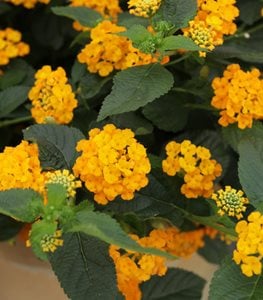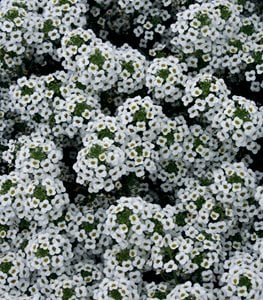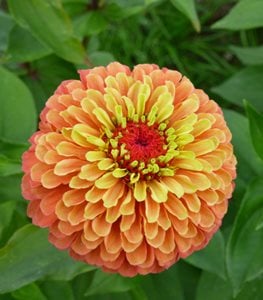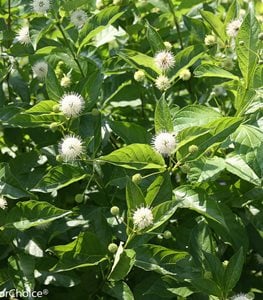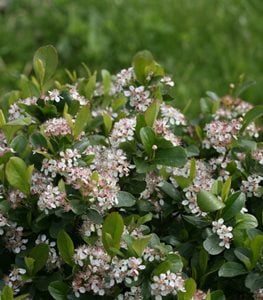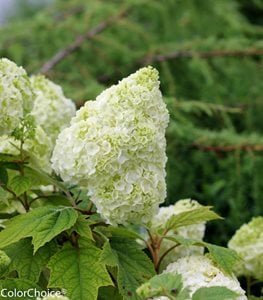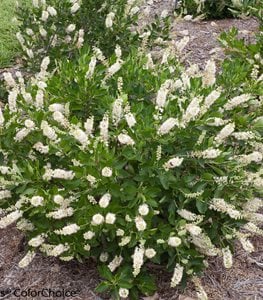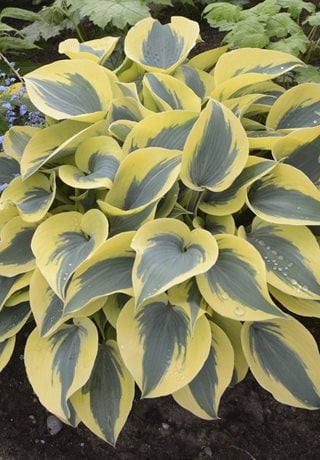30 Pollinator Plants to Grow in Your Garden
Support pollinators by including these annuals, perennials, and shrubs in your yard or pollinator gardenThere’s a lot of buzz these days about supporting pollinators. But what exactly are pollinators and why are they important?
Seed-producing plants need to be pollinated in order to reproduce, maintain genetic diversity, and develop fruits and seeds. Nearly all food crops rely on pollination by beneficial insects and other animals. Without pollinators, the earth’s ecosystems wouldn’t survive.
Plants and pollinators have evolved to create a symbiotic relationship. Pollinators depend on flower nectar and pollen as their food source, and plants are fertilized when pollinators transfer pollen between flowers. The most familiar pollinators include butterflies, bees, and hummingbirds, though many other animals such as moths, flies, ants, beetles, and bats also play a crucial role.
What are pollinator plants?
Some plants are more attractive to pollinators than others because they are more accessible and produce more food. Pollinators have evolved to seek out plants that are a rich source of nectar and pollen.
What attracts pollinators to plants?
Plants have certain traits that entice pollinators such as flower color, shape and scent.
- Bees prefer purple, blue, orange, or yellow flowers with short tubes or no tubes that are easily accessible.
- Butterflies favor white, pink, red, yellow, or purple flowers with a place to perch while they sip on nectar.
- Hummingbirds love flowers in vivid shades of red, yellow, and purple with a tubular shape that they can access with their long narrow beaks.
On this page: Perennials for Pollinators | Annuals for Pollinators | Shrubs for Pollinators
On this page:
Pollinator populations have declined significantly in recent years, mainly due to habitat loss. Homeowners can help by creating pollinator-friendly gardens. Here are some of the best pollinator plants to include in your yard.
PERENNIALS FOR POLLINATORS
ALLIUM (Allium spp.)
Zones: 4-10
Exposure: Full sun
Habit: Upright habit
Height/Spread: 6 to 48 inches tall, 3 to 10 inches wide
Bloom time: Spring to summer
Related to edible onions, garlic, and leeks, Allium is grown for the attractive globe-shaped flowers with tiny star-shaped florets. The flowers are a source of sweet nectar for honey bees, bumble bees, and other insects. Learn more about growing allium plants.
Pictured: 'Serendipity' allium from Proven Winners.
ANISE HYSSOP (Agastache foeniculum)
Zones: 5-9, for most varieties
Exposure: Full sun
Habit: Upright habit
Height/Spread: 2 to 4 feet tall, 1 to 3 feet wide
Bloom time: Early summer to early fall
Purple or lavender flower spikes bloom throughout summer. This mint relative supports a wide range of pollinators including hummingbirds, honey bees, bumble bees, and butterflies. Learn more about growing anise hyssop.
ASTER (Symphyotrichum spp.)
Zones: 3-10, depending on the variety
Exposure: Full sun to partial shade
Habit: Upright spreading habit
Height/Spread: 1 to 6 feet tall, 1 to 4 feet wide
Bloom time: Summer to fall
This North American native with cheerful daisy-like flowers provides a food source for many pollinators at a time of year when other food sources are scarce. Endangered monarch butterflies feed on the nectar in preparation for their journey south. Learn more about growing aster flowers.
BEE BALM (Monarda spp.)
Zones: 3-9
Exposure: Full sun to partial shade
Habit: Upright habit
Height/Spread: 1 to 4 feet tall, 1 to 3 feet wide
Bloom time: Late spring to fall
Bee balm is one of the best plants that attract pollinators. Whorls of red, purple, pink, or white tubular flowers provide a steady source of food for bees, butterflies, and hummingbirds. Learn more about growing bee balm.
Pictured: 'Leading Lady Plum' bee balm from Proven Winners.
BLAZING STAR (Liatris spp.)
Zones: 3-9
Exposure: Full sun
Habit: Upright habit
Height/Spread: 1 to 5 feet tall, 6 inches to 2 feet wide
Bloom time: Summer to fall
This native has flowers spikes that provide nectar and pollen for a wide range of bees, butterflies and beneficial moths. The larvae of liatris flower moth feed on the flowers and seeds, while liatris borer moth larvae eat the stems. Learn more about growing blazing star.
Pictured: 'Kobold' liatris from Proven Winners.
CATMINT (Nepeta spp.)
Zones: 3-9
Exposure: Full sun to partial shade
Habit: Mounding spreading habit
Height/Spread: 1 to 3 feet tall and wide
Bloom time: Late spring to fall
Catmint produces scented tubular blue flowers for months, providing a continuous source of food for a wide range of pollinators including honey bees, native bees, butterflies, and hummingbirds. Learn more about growing catmint.
Pictured: 'Cat's Pajamas' catmint from Proven Winners.
COLUMBINE (Aquilegia spp.)
Zones: 3-9
Exposure: Full sun to partial shade
Habit: Upright habit
Height/Spread: 8 to 36 inches tall, 8 to 24 inches wide
Bloom time: Mid-spring to early summer
Hawkmoths and bees are attracted to this native woodland perennial for the long spurs and tubular shape of the flowers. Migratory hummingbirds fuel up on columbine nectar during their journey north. Learn more about growing columbine.
CONEFLOWER (Echinacea spp.)
Zones: 3-9
Exposure: Full sun
Habit: Upright spreading habit
Height/Spread: 1 to 5 feet tall, 1 to 2 feet wide
Bloom time: Summer
This native with cone-shaped flowers in an array of colors is one of the best summer bloomers for supporting a wide range of pollinators. Butterflies including monarchs, fritillaries, swallowtails, and painted ladies feed on the sweet nectar. Learn more about growing coneflower.
Pictured: Color Coded® 'The Fuchsia is Bright' coneflower from Proven Winners.
FALSE INDIGO (Baptisia spp.)
Zones: 4-9
Exposure: Full sun to partial shade
Habit: Upright spreading habit
Height/Spread: 3 to 4 feet tall and wide
Bloom time: Late spring to early summer
False indigo produces tall spires of colorful pea-like flowers in spring. The flowers are a nectar source for bumble bees and native bees. This native is a larval host plant for butterflies and moths including orange sulphur, wild indigo duskywing, silver-spotted skipper, and genista broom moth. Learn more about growing false indigo.
Pictured: Decadence® 'Blueberry Sundae' baptisia from Proven Winners.
GOLDENROD (Solidago spp.)
Zones: 3-8, with some to Zone 9
Exposure: Full sun to partial shade
Habit: Upright habit
Height/Spread: 1 to 7 feet tall, 1 to 6 feet wide
Bloom time: Late summer to fall
Goldenrod is an essential native plant with yellow flower plumes that support late season pollinators such as native bees, bumble bees, honey bees, butterflies, beetles, flies, moths, and wasps. Learn more about growing goldenrod.
JOE PYE WEED (Eutrochium spp.)
Zones: 3-9, depending on variety
Exposure: Full sun to partial shade
Habit: Upright spreading habit
Height/Spread: 3 to 8 feet tall, 1 to 5 feet wide
Bloom time: Mid-summer to fall
The showy flowers of this native plant are an essential late season food source for hummingbirds, bumble bees, honey bees, wasps, and butterflies such as swallowtails, skippers, red admirals, and fritillaries. Migrating monarch butterflies feast on the nectar-rich flowers as they make their journey south. Learn more about growing Joe Pye weed.
LAVENDER (Lavandula spp.)
Zones: 5-11, depending on the variety
Exposure: Full sun
Habit: Upright habit
Height/Spread: 1 to 4 feet tall, 1 to 5 feet wide
Bloom time: Late spring to early fall
Lavender is an herb grown for the aromatic flower spikes and leaves that have a wide range of culinary, medicinal and ornamental uses. A favorite of beekeepers, the nectar-rich flowers attract butterflies and bees. Learn more about growing lavender.
Pictured: Sweet Romance® lavender from Proven Winners.
MILKWEED (Asclepias spp.)
Zones: 3-9
Exposure: Full sun
Habit: Upright habit
Height/Spread: 1 to 6 feet tall, 1 to 3 feet wide
Bloom time: Summer
Milkweed is one of the most important pollinator-friendly plants and the sole food source for monarch butterfly larvae. The flower nectar, pollen, and leaves are food sources for a wide range of bees, wasps, hoverflies, beetles, butterflies, and moths. Learn more about growing milkweed.
SALVIA (Salvia spp.)
Zones: 4-10, depending on variety
Exposure: Full sun
Habit: Upright spreading habit
Height/Spread: 1 to 5 feet tall, 1 to 6 feet wide
Bloom time: Late winter to fall, depending on variety
Salvia is a mint relative with nectar-rich flowers that appeal to a wide range of pollinators. The colorful tubular or open-faced flowers attract hummingbirds, butterflies, native bees, bumble bees, and honey bees. Learn more about growing the different types of salvia.
Pictured: Rockin'® Fuchsia salvia from Proven Winners.
TICKSEED (Coreopsis spp.)
Zones: 3-9
Exposure: Full sun
Habit: Upright mounding habit
Height/Spread: 1 to 4 feet tall, 1 to 3 feet wide
Bloom time: Late spring to fall, depending on the variety
The cheerful disc-shaped flowers of this native annual or perennial provide a continuous source of nectar. Pollinating insects that feast on the flowers include carpenter bees, leaf cutter bees, long-horned bees, and sulphur butterflies. Learn more about growing tickseed.
YARROW (Achillea spp.)
Zones: 3-11, depending on variety
Exposure: Full sun
Habit: Upright spreading habit
Height/Spread: 1 to 4 feet tall, 2 to 3 feet wide
Bloom time: Summer
Flat-topped flower clusters produce an abundance of nectar and pollen for bumble bees, honey bees, and mason bees. Hummingbirds, hoverflies, moths, and butterflies including fritillaries and swallowtails also feed on this summertime food source. Learn more about growing yarrow.
Pictured: 'Firefly Sunshine' yarrow from Proven Winners.
ANNUALS FOR POLLINATORS
BORAGE (Borago officinalis)
Zones: Annual in all zones
Exposure: Full sun to partial shade
Habit: Upright bushy habit
Height/Spread: 12 to 36 inches tall, 9 to 18 inches wide
Bloom time: Summer
Borage is a quick growing annual herb with vivid blue star-shaped flowers that attract pollinators such as hummingbirds, butterflies, beneficial wasps, hoverflies, honey bees, and other bee species. Plant borage in a vegetable garden to help get food crops pollinated.
COSMOS (Cosmos spp.)
Zones: Most cosmos are annual in all zones. Chocolate cosmos is a tender perennial, hardy in Zones 7-11.
Exposure: Full sun
Habit: Upright branching habit
Height/Spread: 1 to 5 feet tall, 1 to 3 feet wide
Bloom time: Summer until frost
Cosmos have large open-faced flowers that provide easy access to many types of bees. Other pollinators include butterflies, lacewings, ladybugs, hoverflies, and ground beetles. Learn more about growing cosmos flowers.
CUPHEA (Cuphea spp.)
Zones: Most cuphea are grown as annuals in all zones, but are tender perennials in Zone 8 or above.
Exposure: Full sun
Habit: Upright bushy habit
Height/Spread: 1 to 3 feet tall and wide
Bloom time: Late spring until frost
Known as cigar plant, hummingbirds find the vividly colored tubular flowers to be irresistible. This annual, perennial, or shrub blooms nonstop from summer until frost, providing a continuous source of nectar for bees and butterflies as well. Learn more about growing cuphea.
Pictured: Vermillionaire® cuphea from Proven Winners.
EGYPTIAN STAR FLOWER (Pentas lanceolata)
Zones: Most often grown as an annual, but tender perennial in Zones 10-11
Exposure: Full sun
Habit: Upright mounding habit
Height/Spread: 1 to 3 feet tall and wide
Bloom time: Summer
Egyptian star flower produces nectar-rich clusters of brightly colored star-shaped flowers. Plants bloom nonstop throughout the summer until frost, attracting hummingbirds, butterflies, and bees. Grow in containers or as a bedding plant. Learn more about growing Egyptian star flower.
Pictured: Sunstar® Rose pentas from Proven Winners.
FLOSS FLOWER (Ageratum spp.)
Zones: Most often grown as an annual, but overwinter in Zones 10-11
Exposure: Full sun to partial shade
Habit: Upright or mounding habit
Height/Spread: 4 to 36 inches tall, 6 to 18 inches wide
Bloom time: Late spring to frost
Floss flower has clusters of pompom-shaped flowers that occur in shades of blue, pink, white, lavender, and red. Butterflies, bees, and moths are attracted to the fluffy blooms. Learn more about growing floss flower.
GLOBE AMARANTH (Gomphrena spp.)
Zones: Annual in all zones
Exposure: Full sun
Habit: Upright or mounding habit
Height/Spread: 6 to 48 inches tall, 6 to 24 inches wide
Bloom time: Early summer to frost
Globe-shaped flowers, which are actually colored leaf bracts, bloom over a long period of time to support a wide range of bees and butterflies, including skippers. Learn more about growing globe amaranth.
Pictured: Truffula™ Pink gomphrena from Proven Winners.
LANTANA (Lantana spp.)
Zones: 9-11, depending on the variety, usually grown as an annual in areas with cooler winters
Exposure: Full sun
Habit: Upright bushy habit
Height/Spread: 3 to 4 feet tall, 1 to 3 feet tall when grown as an annual; 2 to 6 feet tall, 3 to 10 feet wide when grown as a perennial shrub.
Bloom time: Late spring through fall when grown as an annual; nearly year-round in frost-free climates
Known as shrub verbena, this tender perennial shrub is one of the best flowering plants to attract pollinators, the tropical-hued flower clusters occur for much of the growing season, providing a continuous food source for hummingbirds, butterflies, moths, and bees. Learn more about growing lantana.
Pictured: Luscious® Goldengate™ lantana from Proven Winners.
SUNFLOWER (Helianthus annuus)
Zones: Grown as an annual in all zones.
Exposure: Full sun
Habit: Upright habit
Height/Spread: 5 to 6 feet tall, 1 to 1-1/2 feet wide
Bloom time: Summer to fall
Cheerful disc-shaped flowers are a magnet for honey bees, carpenter bees, mason bees, and native wild bees. Pollinators are attracted to the brightly colored petals, scent, and abundant nectar that’s easily accessible. Learn more about growing sunflowers.
Pictured: Suncredible® Yellow sunflower from Proven Winners.
SWEET ALYSSUM (Lobularia maritima)
Zones: 9-11, commonly grown as an annual
Exposure: Full sun to partial shade
Habit: Mounding spreading habit
Height/Spread: 4 to 10 inches tall, 10 to 48 inches wide, with trailing branches up to 36 inches long
Bloom time: Spring until frost
Tiny fragrant flowers bloom from spring until frost for a continuous source of nectar. Sweet alyssum attracts and supports many different types of bees, butterflies, parasitic wasps, and hoverflies. Learn more about growing sweet alyssum.
Pictured: Snow Princess®" sweet alyssum from Proven Winners.
ZINNIA (Zinnia spp.)
Zones: 10-12, most often grown as an annual
Exposure: Full sun
Habit: Upright or compact bushy habit
Height/Spread: 6 to 48 inches tall, 6 to 36 inches wide
Bloom time: Summer to frost
Brightly colored flowers attract a wide range of pollinators including hummingbirds, butterflies, and bees. Single-petaled flowers produce more nectar than those with double blooms. Learn more about growing zinnias.
SHRUBS FOR POLLINATORS
BUTTON BUSH (Cephalanthus occidentalis)
Zones: 5-9
Exposure: Full sun to partial shade
Habit: Upright bushy habit
Height/Spread: 5 to 12 feet tall, 4 to 8 feet wide
Bloom time: Early summer to early fall
One of the best shrubs for supporting pollinators, this US native produces fragrant white pincushion flowers that appeal to hummingbirds, honey bees, native bees, and butterflies including skippers, swallowtails, fritillaries, and monarchs. Button bush is a host plant for several types of beneficial moths. Learn more about growing buttonbush.
Pictured: Sugar Shack® button bush from Proven Winners.
CHOKEBERRY (Aronia spp.)
Zones: 3-9
Exposure: Full sun to partial shade
Habit: Upright bushy habit
Height/Spread: 8 inches to 12 feet tall, 18 inches to 10 feet wide
Bloom time: Spring
Native to woodlands, bogs, and swamps of the eastern U.S., chokeberry is a low-maintenance shrub with fragrant white flowers that appear in spring. The blooms are a food source for many pollinators, primarily smaller bees. Learn more about growing chokeberry shrubs.
Pictured: Low Scape Mound® chokeberry from Proven Winners.
OAKLEAF HYDRANGEA (Hydrangea quercifolia)
Zones: 5-9
Exposure: Full sun to partial shade
Habit: Upright bushy habit
Height/Spread: 3 to 8 feet tall and wide
Bloom time: Late spring to summer, with flower heads lasting into fall
This deciduous shrub has showy flower spikes that are a nectar source for bees, wasps, and butterflies. The peeling bark provides sheltered spots for overwintering pollinating insects. Learn more about growing oakleaf hydrangeas.
Pictured: Gatsby Moon® oakleaf hydrangea from Proven Winners.
SUMMERSWEET (Clethra alnifolia)
Zones: 4-9
Exposure: Full sun to partial shade
Habit: Upright bushy habit
Height/Spread: 3 to 8 feet tall, 3 to 6 feet wide
Bloom time: Mid to late summer
Summersweet is a deciduous shrub that flowers in mid to late summer at a time when many other plants have finished blooming. Hummingbirds, butterflies, and bees rely on the fragrant white flowers as a late season food source. Learn more about growing summersweet.
Pictured: Vanilla Spice® summersweet from Proven Winners.
RELATED:
Flowers for a Bee-Friendly Garden
25 Butterfly Garden Plants & Flowers
24 Best Hummingbird Flowers
How & Why to Grow Native Plants

